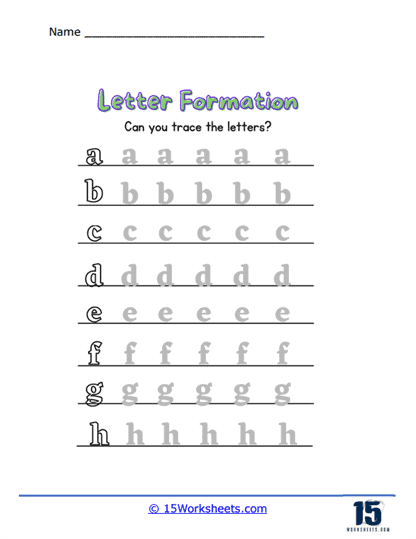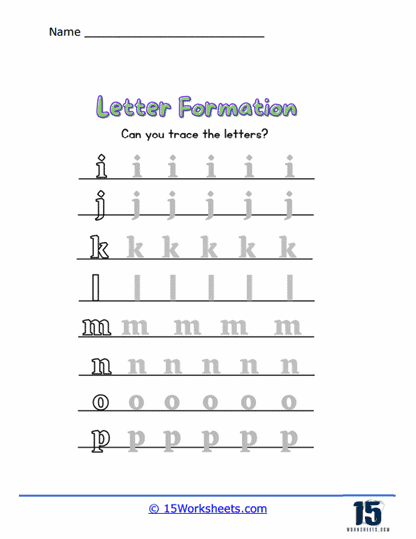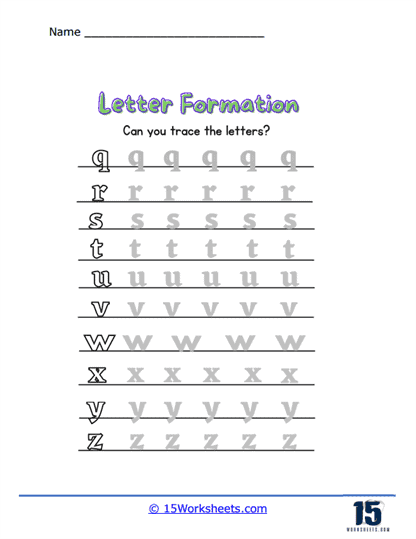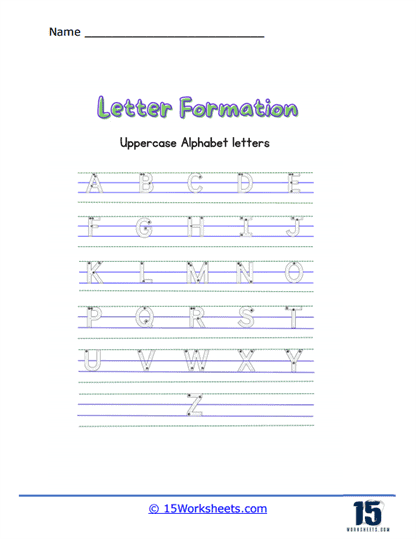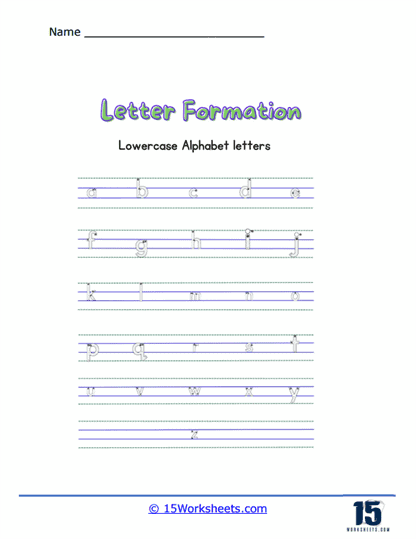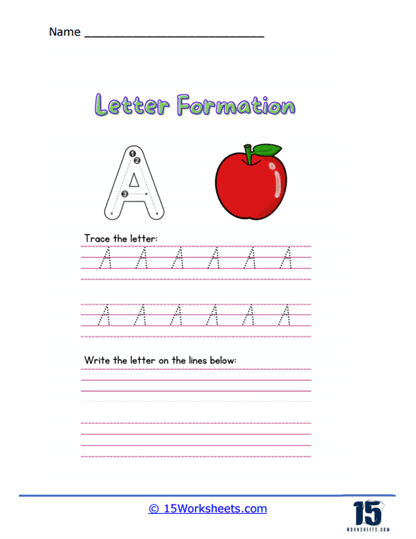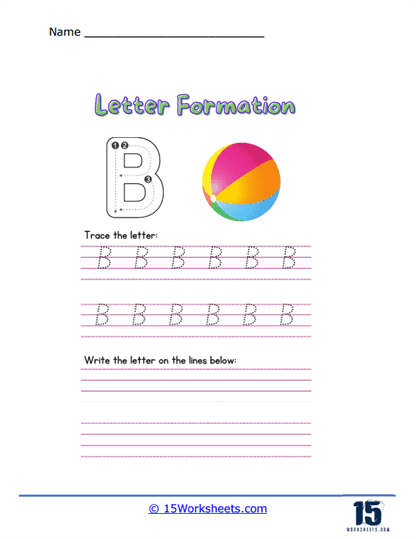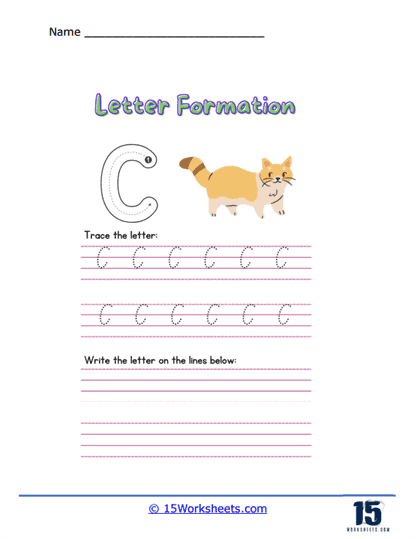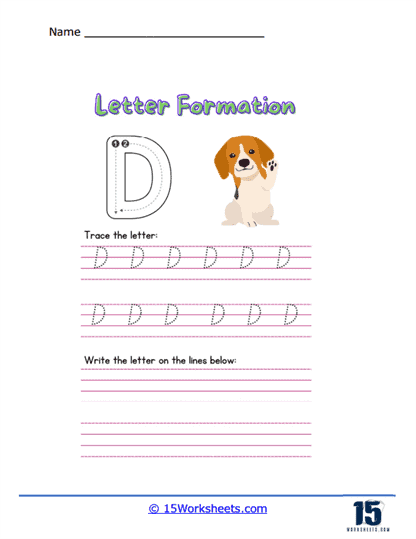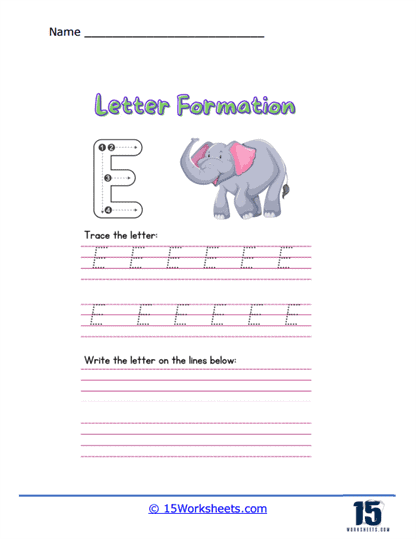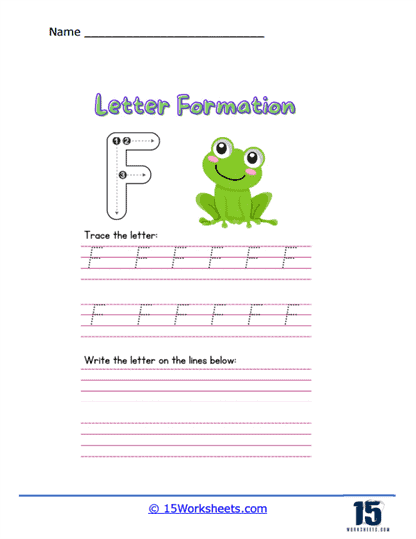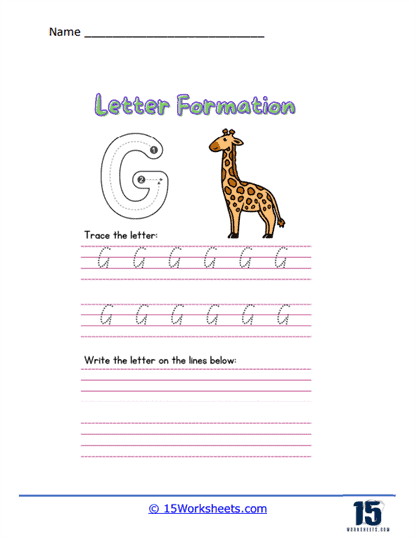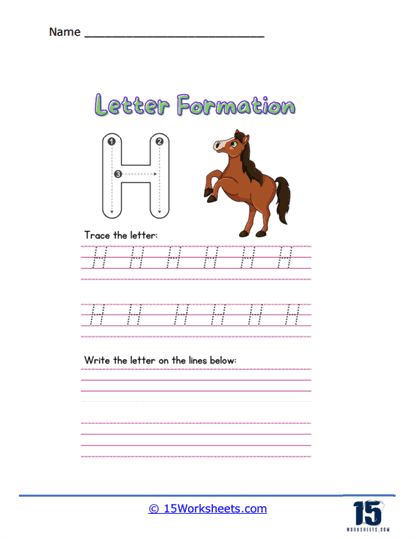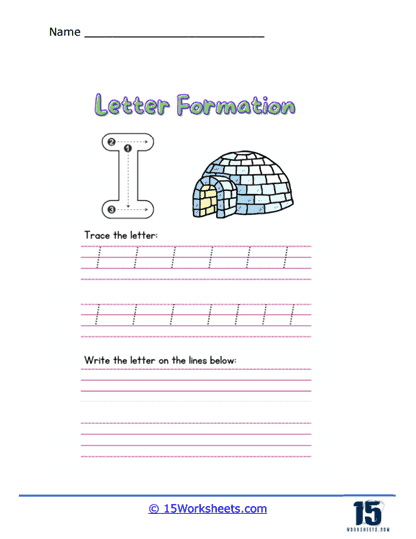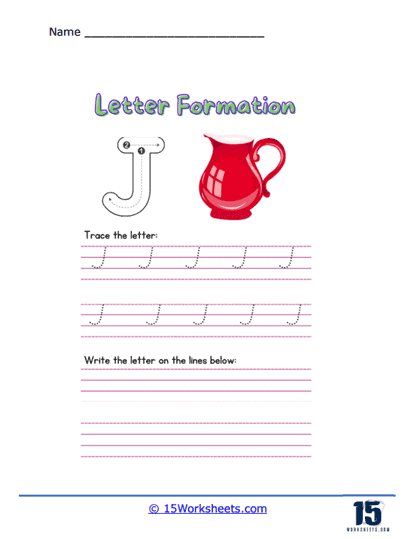Letter Formation Worksheets
About These 15 Worksheets
These letter formation worksheets were developed to assist people (especially younger children) in learning how to properly write the letters of the alphabet. It’s like a map that guides your hand to move in the right direction, helping you draw those confusing loops and lines that make up our letters. These sheets can be used to learn both lowercase and uppercase letters.
Picture a time when you first tried to ride a bike without training wheels. It was quite tricky, wasn’t it? Your legs had to pedal, your hands had to steer, and your brain had to keep your balance. Overwhelming, right? Yet, after enough practice, you probably got the hang of it, and now you can bike without even thinking about it. This is very similar to learning how to write.
Just like training wheels help you learn to ride a bike, letter formation worksheets are the training wheels for writing. They’re all about practicing and mastering the art of handwriting. They have dashed lines or dotted lines forming a letter, and your job is to trace these lines with a pencil or pen, following the exact path of the dashes or dots. Over time, this repeated exercise helps your hand remember the shape of each letter. You may even find some worksheets with numbered arrows that show the order and direction of strokes, which makes it even easier to learn!
Let’s talk about the structure of these worksheets. They come in a printable format with rows of each alphabet letter. Each row consists of the letter displayed in its correct form, followed by examples with guiding lines for tracing, and then some blank spaces for you to practice writing the letter without any guidance.
Not all letters are created equal – some are simple, like ‘I’ or ‘T’, while others are more complex, like ‘B’ or ‘G’. Each letter has a different pattern or ‘path’ that needs to be followed when you write it. These paths can be straight lines, curved lines, or a combination of both. The worksheets help you understand these paths.
Letter formation worksheets come in all sorts of creative themes and varieties too! You might find some with animals, superheroes, space, or your favorite cartoon characters. The creators of these worksheets make them fun and engaging, so you won’t feel like you’re doing boring homework, but rather participating in an exciting activity!
Now you might be thinking, “Why is it so important to learn letter formation properly?” The answer is quite simple. Learning to form letters correctly helps you write faster and clearer. If you make a habit of forming letters wrong, it could make your handwriting hard to read. It also makes it harder to write quickly because your hand might not flow smoothly from one letter to the next.
What Letters Do Students Have The Most Difficulty With?
Some letters tend to be more challenging for children to write than others, typically because of their shape, the number of strokes involved, or the direction of the strokes.
Generally, students often find it challenging to write lowercase letters such as ‘b’, ‘d’, ‘p’, and ‘q’ because these involve both a straight line and a circle but in different orientations. These letters are also confusing as they look similar to each other, just flipped or rotated. It’s easy to mix them up.
The lowercase letters ‘f’ and ‘g’ are also tricky. ‘f’ usually extends up above the middle area (called the median) and below the baseline, which can be tough to remember. Similarly, ‘g’ has a complex formation with a loop above and below the baseline, and children might struggle with how low to make the lower loop.
Letters ‘s’ and ‘z’ in both their lowercase and uppercase forms can be difficult due to their curvy nature. The zigzag shape of ‘z’ and the almost full circle shape of ‘s’ often end up being written backward by children who are just starting to write.
Uppercase ‘B’, ‘R’, ‘S’, and ‘G’ are also a bit tricky for most students. They all require several strokes with different orientations. For example, ‘B’ needs a straight line and two almost semi-circles, ‘R’ needs a straight line, a semi-circle, and a diagonal line, ‘S’ needs two opposite semi-circles, and ‘G’ needs a circle and a straight line.
Children may also find difficulty with letters whose lowercase and uppercase versions look very different from each other, such as ‘a’ and ‘A’, ‘g’ and ‘G’, or ‘q’ and ‘Q’. This can be confusing when they are learning to recognize and write the different forms of each letter.
So why are these letters more difficult to write? It’s all about how our brains learn and control our hand movements. When we’re learning to write, our brains are developing what’s known as “motor memory” for each letter, which means learning the specific hand and finger movements needed to create each shape. Letters that require more complex, less intuitive movements will be harder for the brain to memorize and replicate.

